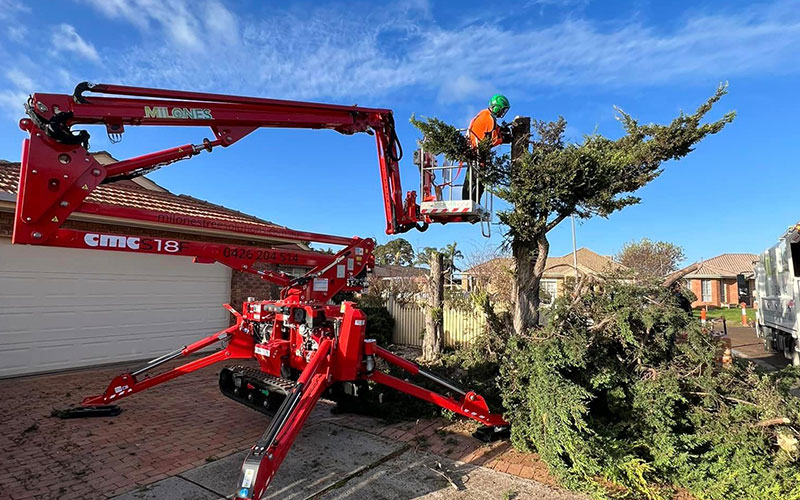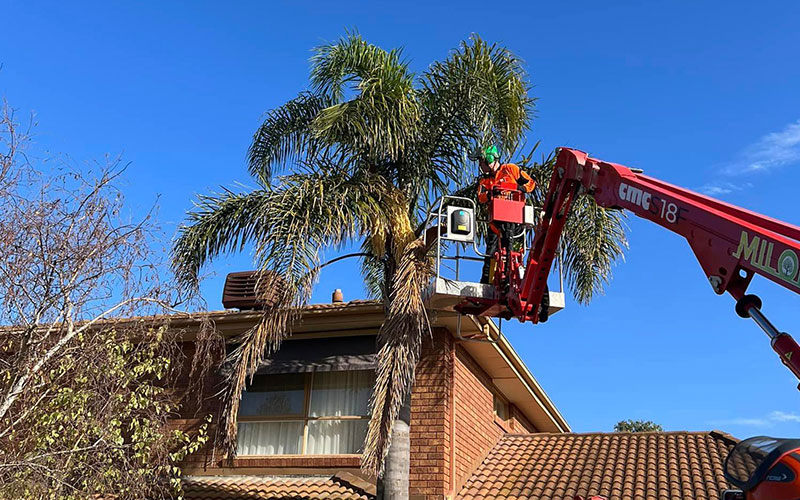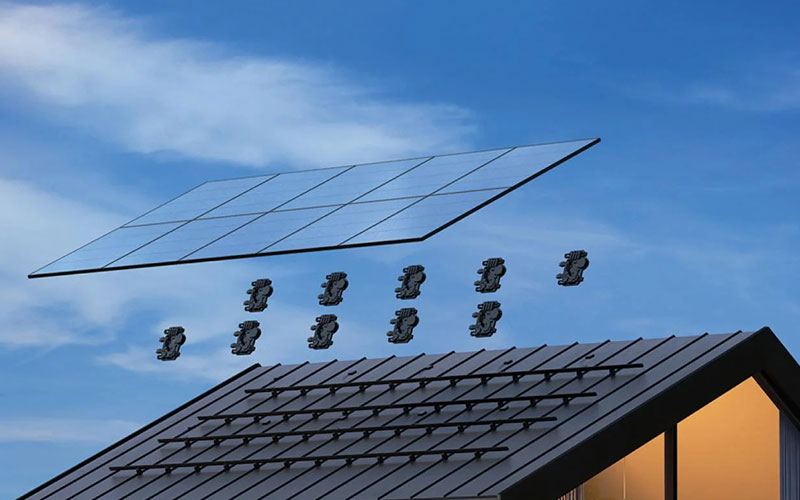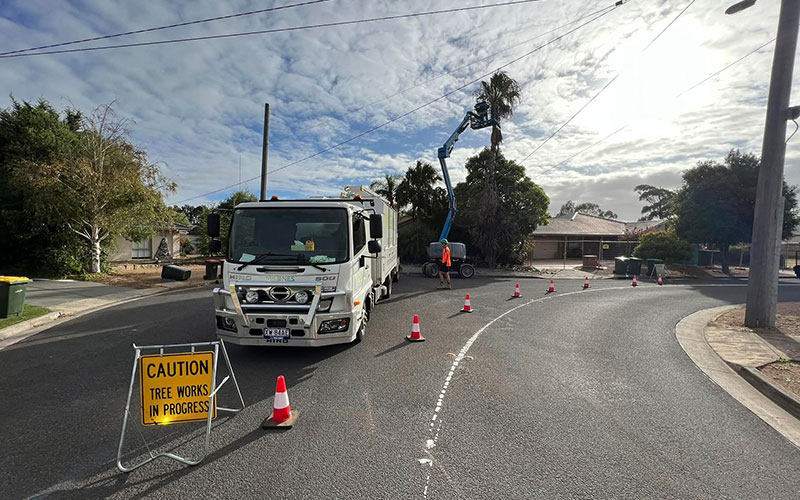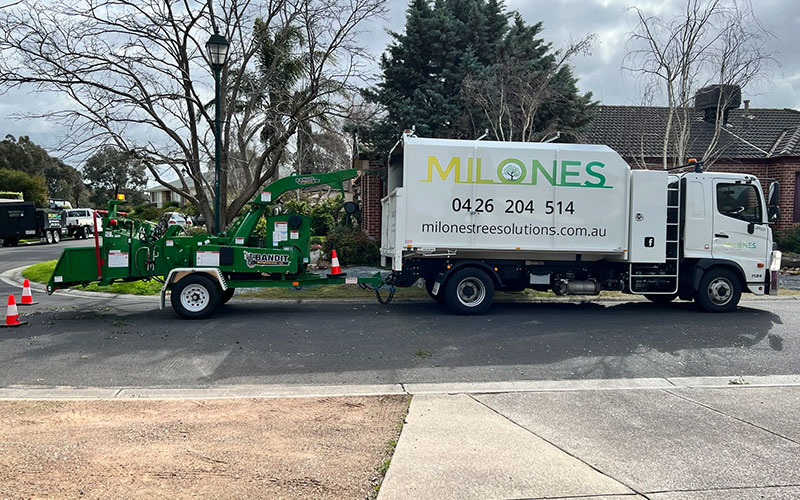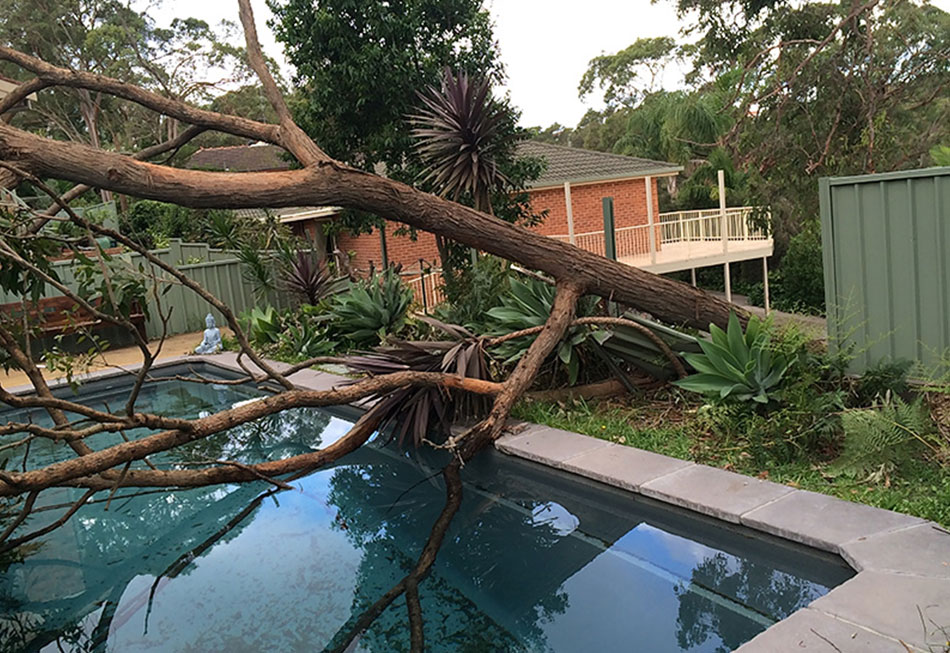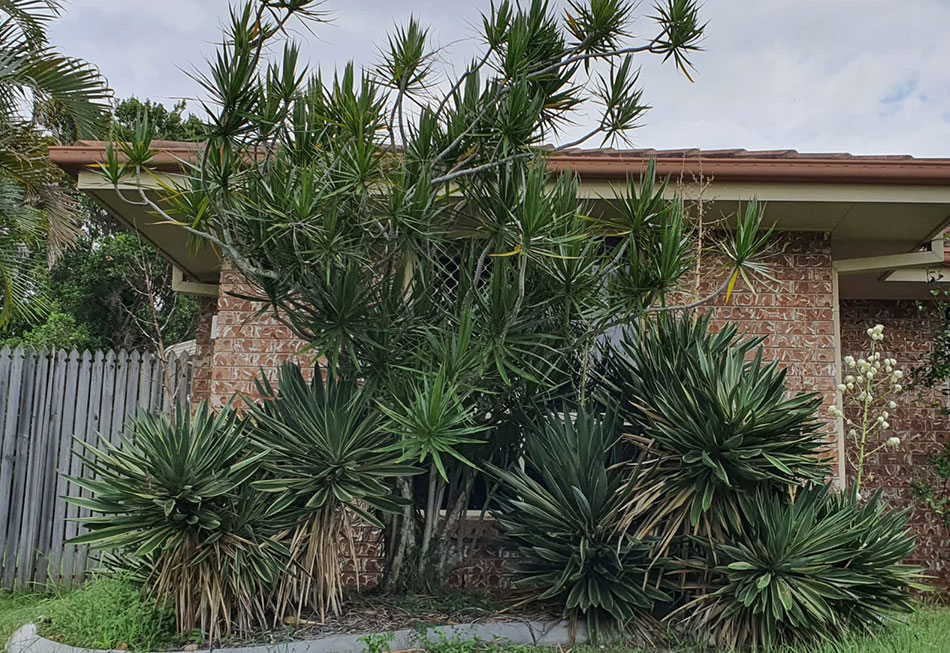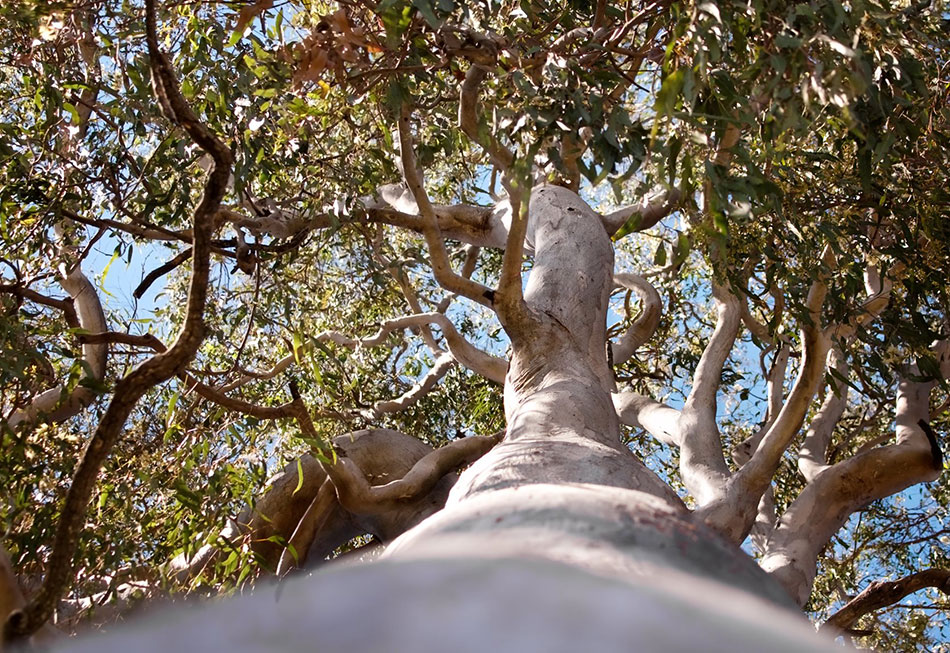Trees around a pool can create a picturesque and serene environment, adding to the overall…
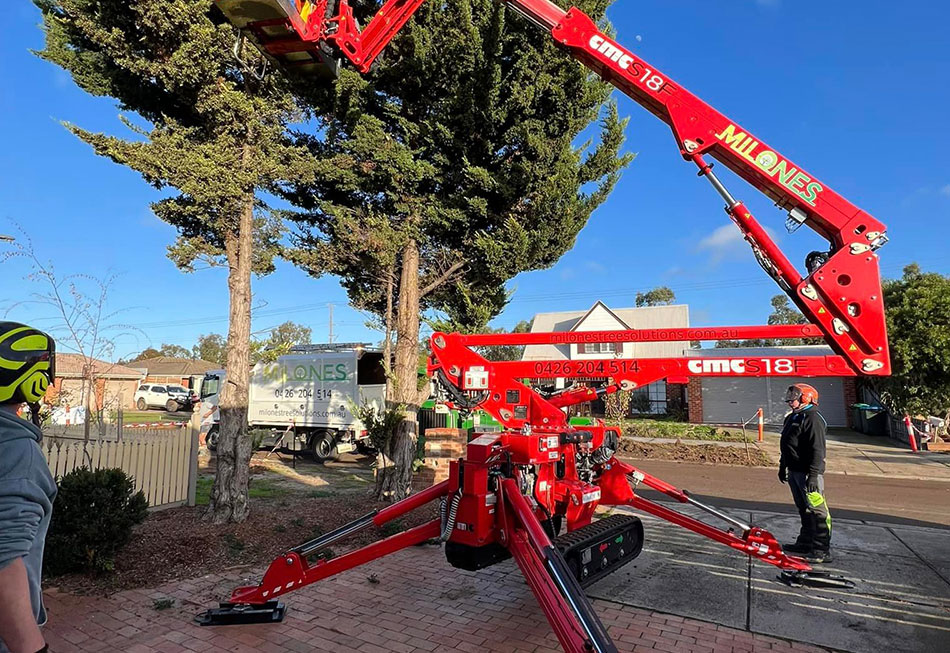
Tree Removal For Solar Panels Installation – Everything You Need To Know
Installing solar panels is one of the best ways for homeowners to reduce their carbon footprint, cut their energy bills and reduce dependence on the energy grid. However, if your home gets a lot of natural shade, you might be wondering if you have to cut down any trees before installation.
The short answer is that solar panels function most efficiently under zero shade. But the ins and outs of whether you need tree removal are a bit more complicated. And that’s exactly what we are going to look at in this post.
Why does tree shading have a large impact on solar production?
To understand why zero shade is the ideal situation, you need to know a bit about how solar power systems work.
Your panels are only half of the magic. They collect the energy from the sun—energy that becomes direct current electricity (or DC). However, DC can’t generally be used to power appliances, lights and other household items. That’s where the other half of the magic comes in: the inverter. Your inverter transforms DC into AC (alternate current), which is what we use for everyday power.
Without getting too technical, most panels are usually arranged in strings so that they can better meet the inverter’s voltage requirements. The number of strings depends on the size of your solar system. Think of it like a Christmas tree. You could decorate a small tree with just one string of lights. But a larger tree could take two or three or more.
If you remember in older Christmas lights, if one light went out, the entire string did. That’s kind of how solar panels react to shade. If just one cell in a string is even partially shaded, the entire string could stop feeding power to the inverter.
Another analogy is to think of the strings like a hose. Shade on a panel is like a kink in the hose. It only takes one kink to cut off the entire water supply.
One of the disadvantages of Solar Panels is that they depend on the availability and intensity of sunlight – Wikipedia
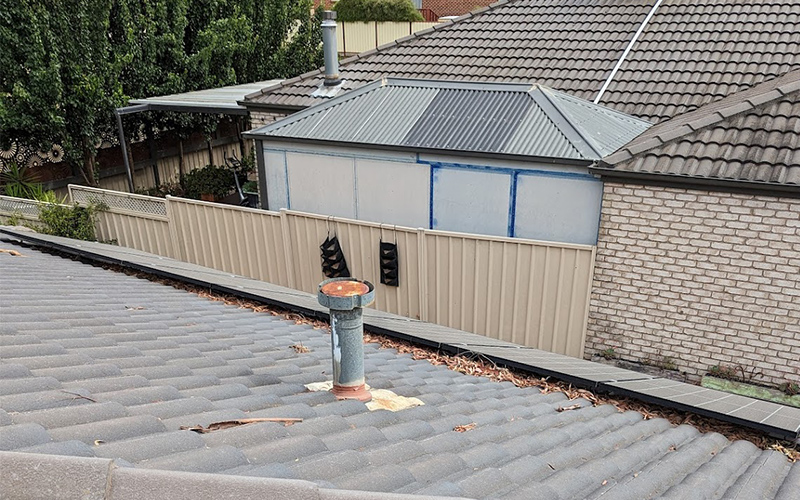
Fallen Trees & Branches causing Damage to Solar Panels
Solar Panels are robust, built to last 20+ years and handle Australia’s extreme weather conditions. This doesn’t mean they are indestructible, one common cause of solar panel damage are tree limbs falling on a panel.
Another consideration is leaves and twigs building up under the panel and causing a fire hazard. This applies especially if you have a dead tree near your property. Do not delay dead tree removal.
Even the smallest debris, like twigs, leaves, or dirt, can cause small micro-scratches on your solar panels. The heavier the debris, the more potential damage. Acorns and full branches, for example, can break panels completely. – Modernize
Alternatives to Tree Removal For Solar Panels
You can see that even a little shade can hinder your solar system’s efficiency. Every minute that your panels aren’t running at optimum efficiency is money wasted. While you can’t control shade from the clouds, you certainly have control over the trees on your property.
Before you consider full-blown tree removal for solar panel installation, though, it is worth examining the pros and cons of some of the alternatives.
Tree Trimming
Often, you don’t actually need to completely remove a tree in order to get rid of the shade it provides. If possible, trimming the tree back is a preferred option because it allows you to keep the beauty of the tree and the shade it provides to your yard without impacting your solar system.
One thing to consider with trimming, however, is that it will be an ongoing process. You’ll need to get the same trees trimmed over the years as they regrow. Furthermore, depending on how the tree grows, it may eventually need to be removed anyway if trimming is no longer a viable option.
A certified arborist, like those at Milone’s, will be able to examine your existing trees and help you determine if trimming is a workable method of controlling your shade.
Sometimes its unavoidable, and trimming or removing trees will provide a greater return for our customers looking to install a solar system – Troy C, Watters Electrical & Solar Albury
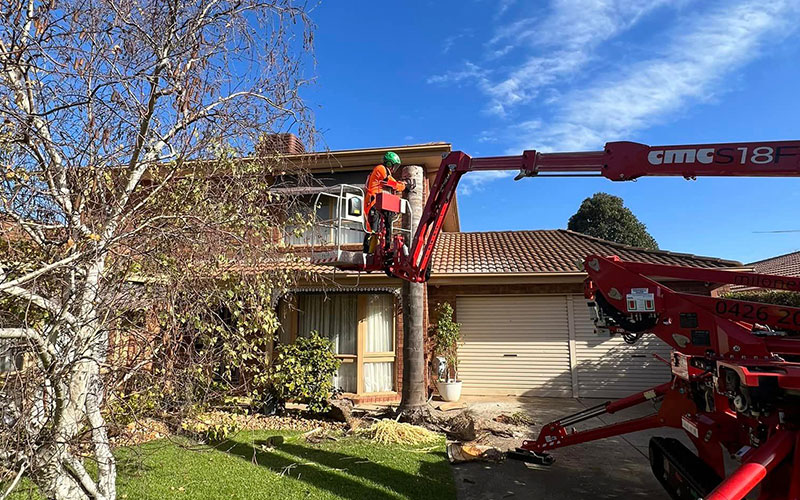
Microinverters
A typical system has just one inverter that all of the panels feed into. An alternative method is to use a smaller, separate inverter installed on every panel. These microinverters essentially transform every panel into its own independent system, so there is no longer any need for strings. This way, if a single cell gets shaded, it doesn’t affect the output of any other panels.
While microinverters do reduce the effect of shade on your solar energy efficiency, they don’t eliminate it. Shade from trees is still going to cost you some power. The other downside to microinverters is the expense. They are a higher upfront cost to install, so it may be more affordable to just cut the offending trees down and stick with a traditional solar system.
String Inverter With MPP Tracking
With this type of system, you still use the traditional setup of panels arranged in strings attached to a single inverter. However, the system includes technology called maximum power point tracking (or MPPT). MPPT basically adjusts the voltage as panels get shaded so that the inverter can still receive some of the current rather than none of it.
This setup does help you lose less energy in shady conditions, but it’s not a perfect solution. Like microinverters, MPPT inverters are more expensive. They are also a little less reliable for two reasons. First, they have more circuitry and components. Second, they switch on and off more frequently as they are called on to convert energy. Both of these factors mean that MPPT systems may need more maintenance more often.
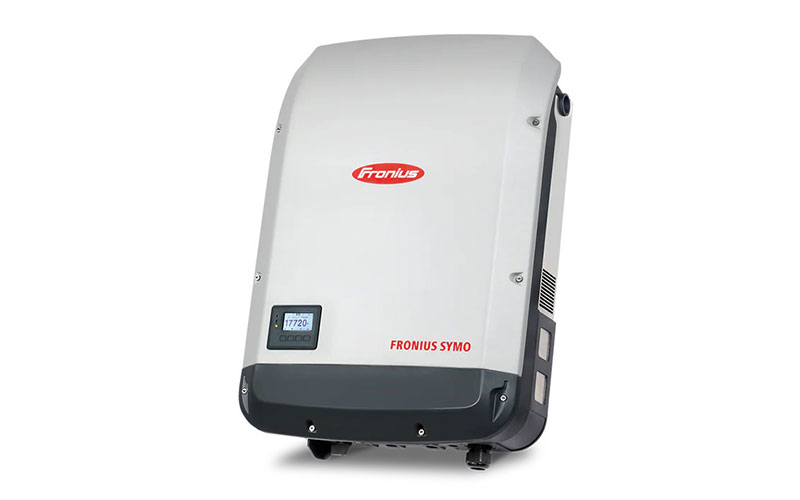
Trees Vs Solar Panels: Important Considerations
Examining the alternatives makes it pretty clear that tree removal is often going to be the best option to deal with shade prior to solar panel installation. However, you might be wondering if the impact of removing the trees will undo the benefits you hope to gain from solar energy.
Let’s look at three of the most common concerns to help you make a more informed decision.
CO2 Impact
One survey found that 85% of homeowners want to go solar in order to be more eco-friendly. However, it might seem counterintuitive to cut down trees in order to go green. After all, don’t trees make a big impact on mitigating carbon emissions?
In order to answer this question in the context of your home, you need to compare the positive effects of efficiently running solar panels to the negative effects of removing a tree. According to the European Environment Agency, a single full-grown tree absorbs approximately 22 kilograms of CO2 from the atmosphere every year. A single solar panel, however, can offset as much as 230 kilograms of carbon emissions.
Of course, panels can only offset emissions at that rate if they are functioning optimally. Therefore, you can cut down as many as ten trees in order to eliminate shade from a single panel without negatively affecting your CO2 impact.
Energy Bill Savings
Another primary motivation for switching to solar power is energy bill savings. Homeowners are willing to pay the high upfront installation cost in order to reap the long term savings.
But adding tree removal costs on top of that makes the initial investment even more expensive. Is solar power still going to be worth it in the end?
An average home can expect to save around $2,000 per year in energy bills by switching to solar. Furthermore, because the cost of energy generally trends upwards, those savings will effectively grow over time.
Removing a tree in Australia, on the other hand, costs approximately $1,100 according to Canstar. So, for the average homeowner, every two trees removed adds about another year until you see a return on investment from solar.
Since most solar panels are rated to last about 25 years, you can feel comfortable knowing that the cost of tree removal is still worth it. The only exception is if you are planning to sell your house in the near future or if you need to remove an exceptionally large number of trees. In this case, you may need to crunch the numbers a bit more meticulously with both your solar installer and your tree removal specialist.
Heating and Cooling
Shade is obviously helpful for keeping a home cool, and thus reducing air conditioning bills. However, there are a few points worth considering to see why the benefits of solar power still outweigh the loss of the shade.
- Those same trees that block sun in the warm months can also block it in the cold ones. So removing trees may increase dependence on AC, but it could reduce dependence on heating.
- Shading your windows—and even lawn—also contribute significantly to home cooling. You don’t need to remove all of your trees, just the ones shading the roof.
- It is difficult to actually measure the monetary benefit of tree shading, and there haven’t been a lot of recent studies on the issue. A 2009 study found that trees could reduce energy use by up to 185kWh throughout the summer. However, a single solar panel can produce around 60kWh in a month, so most residential systems are producing far more energy than they would save from shade.
trees on the north side of a house increase summertime electricity use by roughly 56kWh – Sciencedirect
To Sum It All Up…
A completely unshaded roof is the best situation for your solar panels.
In most cases, tree removal for solar panels will help you achieve optimal performance even when accounting for carbon emissions, return on investment, and HVAC usage. Even though there are alternative solar arrangements to help mitigate the effects of partial shading, they usually aren’t worth it.
Making the final decision about trees and solar panels isn’t always easy. And you shouldn’t have to make it on your own. As part of the planning process, your solar provider should conduct a thorough assessment of your shade and make appropriate recommendations.
Milone’s Provides Tree Removal For Solar Panels Victoria Can Trust
If you do need to remove one tree or many, big or small—Milone’s Tree and Lawn Solutions is here for you. Our certified arborists can take the recommendations from your solar panel installer and come up with a workable, budget-friendly plan that will help you minimise your shade without sacrificing the beauty of your yard.
Contact us today to learn more!

